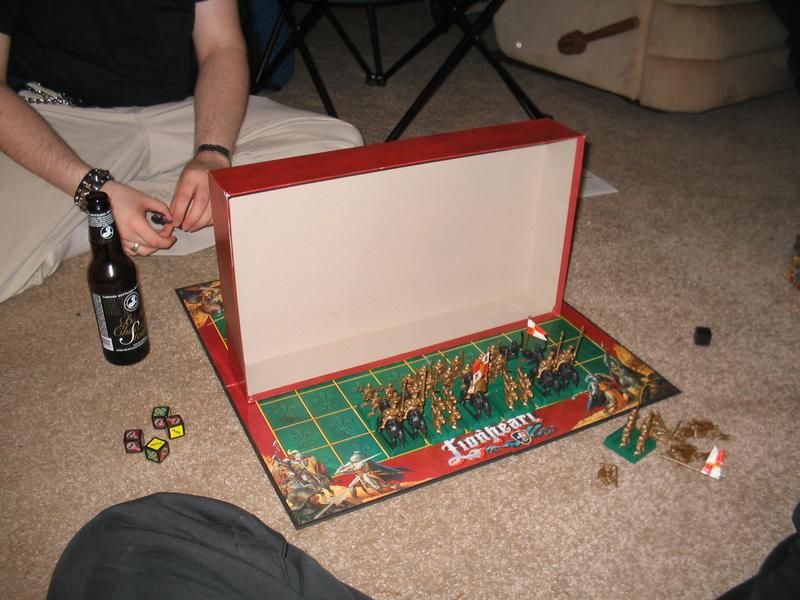With a little bit of this, and a little bit of that, Lionheart is a fantastic introduction into historic wargaming.
Lionheart was released in 1997 by Parker Brothers. It took the elements of Chess, Stratego, and a few bits and pieces from those wargames that were getting so much attention at the time. The objective of Lionheart is simple, wipe out the enemy.
Each game begins with players building their army. Each player has 10 bases, but they can choose which specific units to enlist: Peasants, Infantry, Heavy Infantry, Knights, Mercenaries, and The King. Each unit has different strengths and weaknesses, so there’s a lot of options here, considering the scale of the game.
During setup, the box lid is placed down the middle of the board as a screen so both players can set up in secret. This is important because, the game ends immediately if either player captures the opponent’s King.
During each player’s turn, they can take 2 action, of either Move, Turn, or Attack. Units on foot Move one space in the direction they are facing. Meanwhile, units on horseback can Move as far as they want in the direction they are facing. Any unit can Turn any amount as a separate action.
Any attack requires rolling the combat dice. When a player selects a base of units to attack, they roll a number of dice for each model on the base. Each unit type rolls a different amount of dice per model and is looking for a different symbol. The combat dice have 3 axes, 2 arrows and 1 PANIC. Melee units want to roll axes, archers want to roll arrows and no one wants to roll PANIC. Each correct symbol deals a hit and each model can sustain a certain number of hits before being removed.
If an attack roll results in every die showing PANIC, the unit panics, turns around and moves 1 space away from their intended target. If that unit collides with another friendly unit, they also panic. If a unit retreats off the board, it is eliminated. However, some units don’t quite follow these rules. Kings and Mercenaries never panic, for example. But Mercenaries are frightening foes. For each PANIC they roll, their target must retreat 1 space. But they are also fickle and greedy. If an opposing King moves adjacent to a Mercenary, they can be bribed to change sides by swapping out the flag pole on the unit base. As with real life mercenaries are high risk / high reward units.
The first player to either eliminate the enemy king, or wipe out all their forces except the king is declared the winner!
So let’s recap, Lionheart is like..:
- Wargame because it has:
- List building
- Dice rolls for combat
- Morale checks
- Unit Facing
- Chess because it has:
- A victory condition set on capturing the opponent’s king
- Units move in different ways
- Stratego because it has:
- Hidden unit placement setup
Someone in the comments is going to remark how Chess is a wargame. I’d argue the modern colloquial definition of “wargaming” places Chess thoroughly under the board game category. Feel free to argue with them in the comments to boost our SEO…er…I mean, to engage in meaningful discussion.
Thanks for reading!
Source: Bell of Lost Souls









